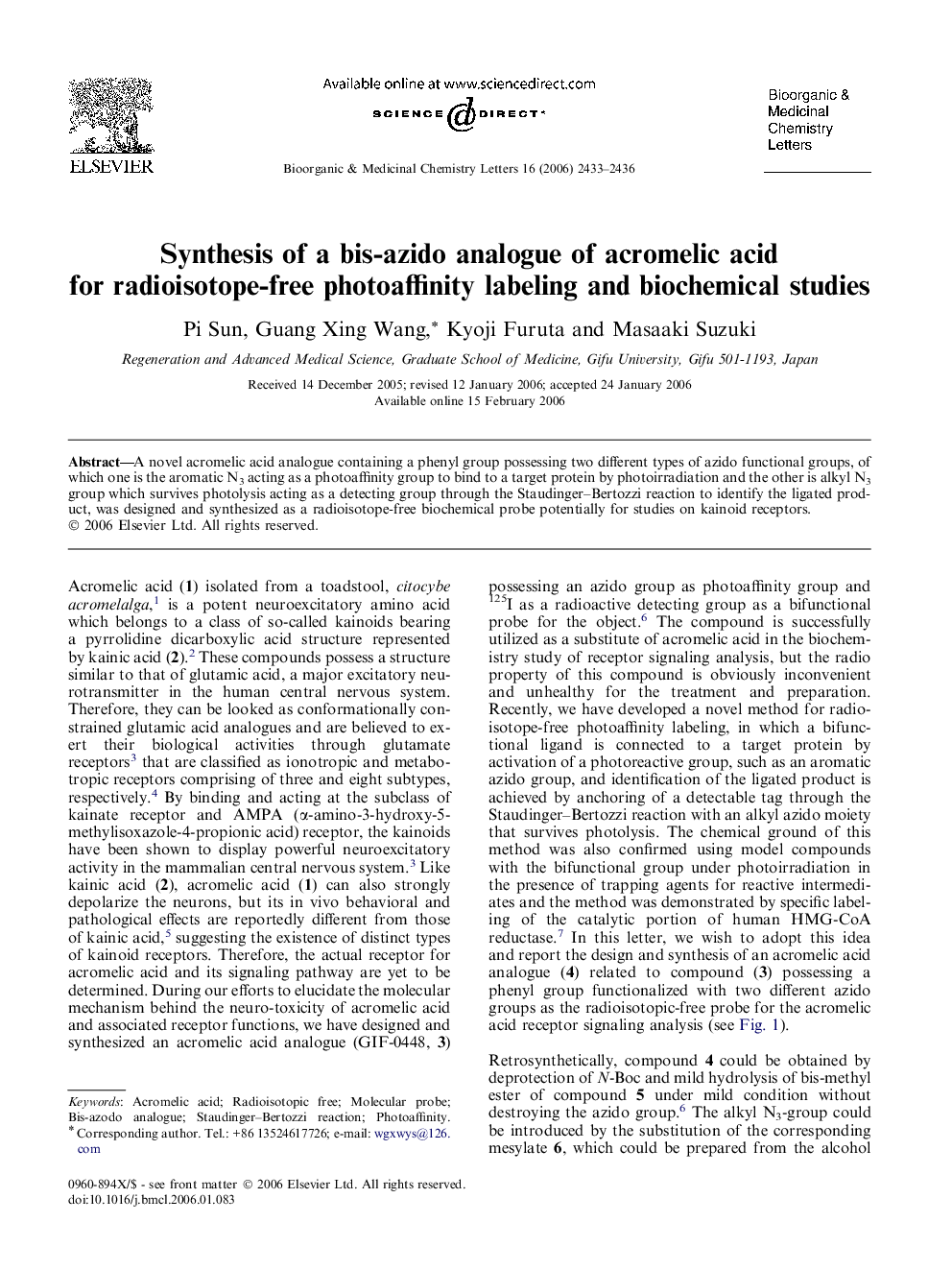| Article ID | Journal | Published Year | Pages | File Type |
|---|---|---|---|---|
| 1374716 | Bioorganic & Medicinal Chemistry Letters | 2006 | 4 Pages |
A novel acromelic acid analogue containing a phenyl group possessing two different types of azido functional groups, of which one is the aromatic N3 acting as a photoaffinity group to bind to a target protein by photoirradiation and the other is alkyl N3 group which survives photolysis acting as a detecting group through the Staudinger–Bertozzi reaction to identify the ligated product, was designed and synthesized as a radioisotope-free biochemical probe potentially for studies on kainoid receptors.
Graphical abstractA novel bis-azido-containing acromelic acid analogue with the aromatic N3 acting as a photoaffinity group and the alkyl N3 group acting as a detecting group was designed and synthesized as a potential radioisotope-free biochemical probe for studies on kainoid receptors.Figure optionsDownload full-size imageDownload as PowerPoint slide
